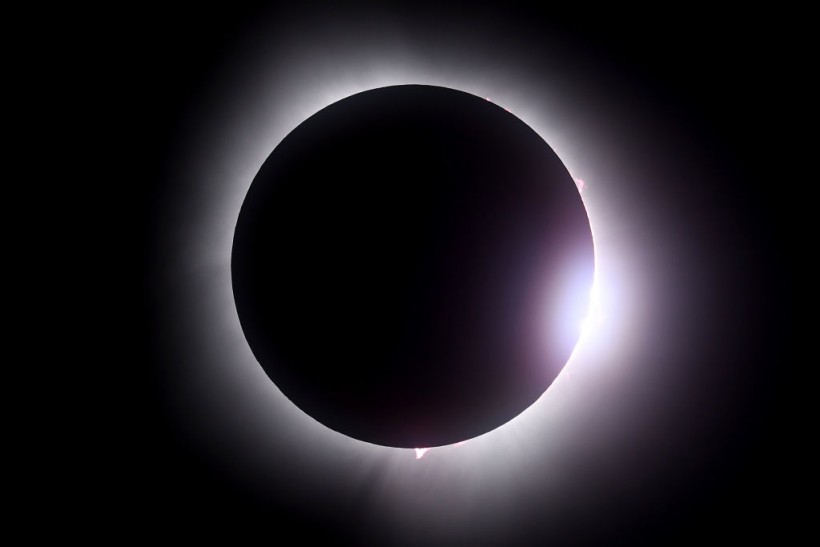Satellite images reveal the gigantic shadow of the Moon sweeping through the US during the total solar eclipse on April 8. Astronauts boarding the ISS also took great shots of the cosmic patch.
Moon's Shadow Snapped During Solar Eclipse
The total solar eclipse hovered over the US, moving through the Midwest and leaving over Maine and New England. Roughly 32 million people lived within the eclipse's path of totality.
The shadow of the Moon also hovered on the country at 1,500 mph. The GOES-16 satellite of NASA and NOAA could see the ethereal phenomenon from its orbit. The satellite snapped thousands of eclipse photos from its fixed position over North America. As these shots were consolidated with one another, they reveal the shadow of the Moon sweeping over the continent. The footage that results can be likened to a blockbuster sci-fi movie.
Aside from this, astronauts boarding the ISS could also witness the eclipse from a unique perspective. An Expedition 71 crew member also snapped a striking photo of the moon's shadow from roughly 418 kilometers over Earth. At such a point, the void of darkness was passing into Newfoundland from New York State.
This shot was not accidentally taken as NASA has been gradually navigating the space station for a couple of months to make it pass through the solar eclipse. They did so while ensuring that the station would be avoiding space junk. As a result, the ISS was able to experience roughly 90% totality.
However, astronauts could not take snapshots of the actual eclipse because cargo constraints made the windows facing the sun inaccessible.
Here's a look at the moon's shadow on @NOAASatellites GOES East as peak totality occurred this afternoon across the continental US! We hope you all had a safe and enjoyable viewing experience! pic.twitter.com/HnidJdDhL6
— NWS Northern Indiana (@NWSIWX) April 8, 2024
ALSO READ: NASA Scientists Share How Solar Eclipse Looks Like From Outer Space: 'Unlike Anything'
Solar Eclipse and Moon Shadow
The shadow of the Moon is typically known as the umbra, the Latin word for shadow. However, the umbra is just the darkest area at the heart of the shadow of the Moon. The shadow of Earth's natural satellite also consists of two other parts: the penumbra, which comprises an area where only a portion of the Sun gets covered, and the antumbra, where a fainter shadow gets cast through a wider radius. Total solar eclipses typically happen when the Moon directly passes between the Sun and the Earth.
These phenomena are rare and may only be seen from specific Earth locations. They occur when the Moon's apparent diameter is more significant than the Sun's. This enables the Moon to cover the disk of the Sun completely. There are also partial solar eclipses, which occur when only a portion of the Sun's disk gets covered by the Moon from a viewer's perspective on Earth.
This is also what viewers see beyond the path of totality when a total eclipse happens and before and after the Moon blocks the Sun entirely as it nears totality. A third kind of eclipse, known as an annular eclipse, occurs when the Moon is too far from Earth to cover the Sun's disk fully. This leads to a ring of sunlight surrounding the Moon's darkened silhouette. It usually occurs when the Moon is close to its apogee, the farther point from its orbit around Earth. Compared to total or annular eclipses, partial eclipses are more common.
They may also be witnessed from a broader geographic scope. Ryan Milligan, an astrophysics lecturer at the Queen's University Belfast, explains that it is crucial to differentiate a partial eclipse from a total solar eclipse. Suppose any area of the solar disk can be seen during an eclipse's partial face. In that case, specialized
RELATED ARTICLE: Total Solar Eclipse 2024: Here's What Scientists Hope To Learn From the Cosmic Event
Check out more news and information on Space in Science Times.















